This year's midseason ranking of the top prospects in the minors has more changes than usual from the offseason top 100 because so many prospects graduated this spring. The players I ranked 1, 2, 5, 6 and 10 are all in the majors to stay, and at a glance, I see at least 10 others who aren't eligible for this list.
I exclude any players in the majors for the midseason top 50, rather than trying to calculate days on the roster for rookie status, so Dylan Cease is out, but Brendan McKay (optioned by Tampa Bay after his last start) is in. Since no one ever reads the intro anyway, remember that your favorite team is under-represented because I hate them.
![]() Law's preseason top 100 prospects
Law's preseason top 100 prospects
![]() Law: Team-by-team draft recaps: American League | National League
Law: Team-by-team draft recaps: American League | National League
 1. Wander Franco, SS, Tampa Bay Rays
1. Wander Franco, SS, Tampa Bay Rays
Franco came into the year at No. 3, behind Fernando Tatis Jr. (1) and Vlad Guerrero Jr. (2), both of whom have already graduated, with Tatis putting up superstar numbers in a third of a season and Guerrero giving the world a glimpse of his power on Monday. Franco doesn't just take the top spot by default, however; he turned 18 in March yet hit .318/.390/.506 in low-A and was bumped up to high-A two weeks ago, where he has yet to strike out in 40 plate appearances. On the season, he's at 36 walks and 20 strikeouts, a function of great pitch recognition and outstanding hand speed at the plate that generate hard contact and power.
The only question I've heard from scouts about Franco is whether he'll stay at short or merely become a plus defender at second. Either way, it's a superstar package at the plate, and he'll play somewhere in the middle of the field.
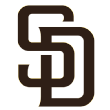 2. MacKenzie Gore, LHP, San Diego Padres
2. MacKenzie Gore, LHP, San Diego Padres
I don't even think you saw the best of Gore on Sunday at the Futures Game; I've seen him throw harder in the past, even stretched out, and his command was maybe a grade below normal. You could still see the makings of three above-average to plus pitches, and he didn't even show his slider, which is his fourth pitch, but I think it's at least above average. He's one of the best athletes on a mound in the minors, and he repeats that precise, high-leg-kick delivery so well that he's able to command his fastball and throw plenty of strikes. He's en route to Double-A now after posting a 1.02 ERA in the hitter-friendly Cal League in the first half of this season, with 110 strikeouts in 79⅔ innings (38% K rate). The Padres have no need to rush Gore, but he isn't that far from being ready to face major league hitters in some role, with the ultimate ceiling of a No. 1 starter, thanks to his stellar four-pitch mix, huge deception and potentially plus command.
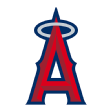 3. Jo Adell, OF, Los Angeles Angels
3. Jo Adell, OF, Los Angeles Angels
The Angels have been aggressive with Adell since his first full pro season, a bit of a reward for the work he did the previous fall and winter to clean up some extra movement in his setup and swing, but every time he has been promoted, he has responded by performing above expectations. The only thing that has held him back so far has been injury; since he returned to Double-A at the start of June, he has hit .360/.430/.607 with just a 19% strikeout rate as a 20-year-old facing older pitching. His aptitude at the plate is exceptional, as he's so big that his swing could easily get too long and lead to high strikeout totals. I suppose he could stay in center, but I think he's going to be so big and strong that he'll end up a plus defender in right who hits 30 homers with a high OBP.
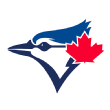 4. Bo Bichette, SS, Toronto Blue Jays
4. Bo Bichette, SS, Toronto Blue Jays
Bichette missed about six weeks due to injury, returned to Triple-A on June 13 (after rehabbing for a few games), and has hit .361/.415/.588 since then, even stealing nine bases in 10 attempts for good measure. He's probably a second baseman in the long run, but with nobody blocking him in Toronto, the Jays have no real reason to refrain from calling up Bichette now. Maybe he's still in Triple-A to work on Vlad Jr.'s defense.
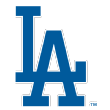 5. Gavin Lux, SS, Los Angeles Dodgers
5. Gavin Lux, SS, Los Angeles Dodgers
Lux has gotten better faster than I expected -- I think better than most folks expected, or he would have gone before the 20th pick in 2016. He has posted a .396 OBP since the start of 2018, spending time in high-A, Double-A and seven games in Triple-A, with 29 homers in that span, all while playing solid to above-average defense at short. He's still only 21 and has areas for improvement; he's a plus runner, but his baserunning hasn't been as valuable yet, and I think he'll continue to grow on defense into at least a 55 regular at short. Even if he's just adequate there, a pessimistic forecast, this is a power/OBP/speed package that few can match in the middle of the infield.
 6. Cristian Pache, OF, Atlanta Braves
6. Cristian Pache, OF, Atlanta Braves
Pache came out of 2017 with zero professional home runs, even with more than 500 PA in the Sally League as an 18-year-old, but we knew the power was in there. He hit nine homers in 2018 and has 11 so far in 2019, all in Double-A as a true 20-year-old. He's also an elite defender in center; if you don't give his range and glove an 80, I would argue that you can't give that to any minor league center fielder. His off-speed recognition still needs work, but it has improved by leaps and bounds in the past 18 months, and he's probably Triple-A-ready at the age of a typical college sophomore. He's going to impact the game on both sides of the ball for a long time, perhaps as soon as the end of this year.
 7. Adley Rutschman, C, Baltimore Orioles
7. Adley Rutschman, C, Baltimore Orioles
For comparison's sake, Rutschman, the best player in this year's draft class and the first overall pick, is 286 days older than Pache. That's no knock on Rutschman, who has yet to make his professional debut after a long and wearing spring that saw him catch for Oregon State and hit more than a third of his team's homers along with a comical .575 OBP. He's a very high-floor prospect because he's considered an elite receiver across the board and has plus arm strength. Barring an injury that moves him off the position, his worst-case scenario is a longtime major league backup catcher with enough power to play semiregularly and be a late-game pinch-hitting option. That's the pessimist's "the glass is half full and contains potassium benzoate" view; the upside is all of that plus OBPs in the .350-.380 range, 25 homers a year and elite defense behind the plate.
 8. Jarred Kelenic, OF, Seattle Mariners
8. Jarred Kelenic, OF, Seattle Mariners
Mets fans might wish to avert their eyes for a moment, since the main prospect GM Brodie Van Wagenen traded to get the worst half-season of Edwin Diaz's career and the wrong half of Robinson Cano's contract has had a tremendous full-season debut. Kelenic was not challenged by low-A pitchers, hitting .309/.394/.586 there, before a mid-June promotion to high-A, where he has continued to make a lot of quality contact and took a six-game hitting streak into the break. He's a plus runner who might stay in center, though I could see him getting bumped by a plus defender there and moving to right field due to his arm. He has high-OBP, 30-homer potential, and that will play at any spot.
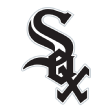 9. Luis Robert, OF, Chicago White Sox
9. Luis Robert, OF, Chicago White Sox
Robert is hitting .349/.401/.618 this season between high-A and Double-A -- he has been promoted to Triple-A Charlotte but hasn't played there yet -- but when I'm in the park, he has been 0-for-9 and has missed three other games with me there due to injury. I try not to take these things personally, but I do think Lou Bob might be telling me something. He was way too advanced for Class A -- he's really big, with explosive, fast-twitch actions and great bat speed -- and it seems like Double-A pitchers didn't fare much better against him. You could see in the Futures Game that he's vulnerable to velocity inside and tries to work his hands inside the ball to adjust. I think that's the gating factor between his becoming a star and becoming a solid regular who teases you into thinking he'll become more.
 10. Casey Mize, RHP, Detroit Tigers
10. Casey Mize, RHP, Detroit Tigers
Mize was the No. 1 pick in 2018, dominated high-A for a few useless weeks, then was dominating Double-A (including a no-hitter) before being pulled from his June 13 start with shoulder discomfort. He just returned to throw a simulated game last week, so we should see him on a mound again soon. Before the shutdown, he'd been just the guy he was for Auburn the prior spring, showing plus-plus control (he walked only 4.2% of hitters) with an out pitch in his splitter, an above-average to plus slider and above-average velocity. He has ace potential as long as he stays healthy, which, after this scare, might be a bit more of a concern than it was two months ago.
 11. Brendan McKay, LHP/1B, Tampa Bay Rays
11. Brendan McKay, LHP/1B, Tampa Bay Rays
McKay is eligible for this list because the Rays optioned him to the minors during the All-Star break, though I imagine he'll be back for most of the second half. What has become clear since the fourth overall pick in 2017 began his pro career is that he was more advanced as a pitcher -- in terms of command and his feel for mixing his pitches -- than it appeared in college but less advanced as a hitter. Had he given up pitching after signing, he'd probably still be a top-50 prospect as a hitter, but the Rays face a scenario in which (1) he's ready to join their rotation now, (2) they need him because they're contending and (3) his bat isn't ready. That might spell the end of the two-way experiment, other than making him an occasional pinch hitter, but he could plug into the Tampa Bay rotation right away and be league average or better.
 12. Andrew Vaughn, 1B, Chicago White Sox
12. Andrew Vaughn, 1B, Chicago White Sox
The best pure bat in the 2019 class, ranked second on my board and selected third overall, Vaughn is already in low-A Kannapolis and could finish the summer in Winston-Salem, the same model the White Sox used last year for first-round pick Nick Madrigal. Vaughn has a great, simple, quiet, right-handed approach with excellent plate discipline, projecting to hit for a high average and OBP with at least above-average power and probably a lot more. The knocks against him are that he's a right/right first baseman -- he has played a little third, but realistically he's going to be at first -- and he's only 5-foot-10. I'm not concerned until he shows us any reason, in performance or tools, to believe he won't hit.
 13. Dustin May, RHP, Los Angeles Dodgers
13. Dustin May, RHP, Los Angeles Dodgers
In addition to boasting quite likely the best hair in all of the minors, May is one of the most athletic pitchers in pro ball and has a lightning-quick arm. He was up to 97 mph in Sunday's Futures Game, but the pitch played up because his high-80s/low-90s cutter, a pitch he added last year, is so effective. The Dodgers have helped smooth out his delivery, which had some violence in the finish back in high school, and he has become a strike thrower in pro ball, with just a 6% walk rate in Double-A this year before last week's promotion to Triple-A Oklahoma City. He's just 21 and not on the 40-man roster yet, so the Dodgers might be loath to bring him to the majors this year, but he certainly could help them in some role down the stretch -- and will be coveted by every team the Dodgers approach in trade talks.
 14. Taylor Trammell, OF, Cincinnati Reds
14. Taylor Trammell, OF, Cincinnati Reds
Trammell's first half was disappointing, though he should get some slack for being 21 in Double-A. He hasn't shown any power, and bizarrely, he isn't hitting right-handed pitchers (what should be his strength, as he's a left-handed hitter). He also has been nicked up this year, spraining several fingers when they got caught in the outfield fence during a spring training drill -- the fence was taken out back and shot -- and straining a hamstring a few weeks ago, so I'm sanguine we aren't seeing the real Trammell, who is a plus runner with a very good eye at the plate, above-average raw power and very quick hands. He's a future left fielder because of his arm, but his other four tools are strong enough to make him a good regular or a star there.
 15. Alex Kirilloff, OF, Minnesota Twins
15. Alex Kirilloff, OF, Minnesota Twins
Kirilloff hasn't hit for much power this year but continues to hit for average and get on base. I haven't heard anyone express any long-term concerns over his ability to hit for above-average power in the majors. The slip might be a function of the wrist injury that cost him all of April. Since the start of June, he has hit .333/.402/.529 in 97 PA, missing two and a half weeks with another injury, but at least showing the hit/eye/power combination that made him a top-15 prospect over the winter as well. He projects as a middle-of-the-order bat, and he has the plus arm to handle right field.
 16. Luis Patiño, RHP, San Diego Padres
16. Luis Patiño, RHP, San Diego Padres
If you saw the Futures Game, I hope you stayed until the very end to see Patiño steal the show, finishing his outing with a strikeout on a 98 mph heater that he was so confident would end the inning that he was already walking to the dugout before the batter, Jo Adell, had completed his swing. (Patiño was right; nobody sniffed him on Sunday.) The somewhat diminutive Colombian has a very fast arm, pumping 96-100 mph with a power slider that touches 90 along with good feel for a changeup, and he has more than held his own as a 19-year-old in the hitter-friendly, high-A California League this year. Despite his arm speed, he repeats his delivery well enough for above-average control, and in time he should get there with his command. The risk is his youth and relatively small frame -- small in baseball terms, as he's listed at 6 feet, 192 pounds -- which might make him more likely than other pitchers to get hurt over time. Or maybe it won't. Either way, I'd bet on the arm and the player.
 17. Ke'Bryan Hayes, 3B, Pittsburgh Pirates
17. Ke'Bryan Hayes, 3B, Pittsburgh Pirates
Hayes is the best defensive third baseman in the minors; scouts who have seen him have told me they graded his glove at 80, thanks to his hands and his instincts. He's also a polished hitter with a pretty quiet approach, albeit one that doesn't produce a lot of power, even though he has been in Triple-A this year with the juiced MLB ball. Even if he's a 12-15 homer a year guy in the majors, his combination of defense that should save 10-plus runs per year and high averages and OBPs should make him an above-average regular for a long time.
 18. Forrest Whitley, RHP, Houston Astros
18. Forrest Whitley, RHP, Houston Astros
This year has not gone as planned for Whitley or the Astros, as he struggled in five starts and three relief appearances in Triple-A, giving up 33 runs in 24⅓ innings, including nine homers. He has been on the IL with a shoulder issue for a month and a half and has yet to return, so his prognosis in the short term is unknown. Whitley made headlines over the winter for hitting 110 mph with a three-ounce ball in a pulldown drill and came into 2019 as the minors' top pitching prospect, boasting a five-pitch mix in which nothing was consistently less than average, to go with very good control and the size and build of a top-of-the-rotation starter. If this is some minor hiccup, maybe a hangover from offseason drills and/or an artifact of the happy fun ball in Triple-A, he should still be able to get there. (And, hey, maybe enough with the breathless coverage anytime a prospect throws a teeny tiny ball at some crazy velocity in artificial conditions, OK?)
 19. Kyle Tucker, OF, Houston Astros
19. Kyle Tucker, OF, Houston Astros
Tucker appears to be in the post-hype phase, where a prospect's first cup of coffee doesn't go well, and suddenly the industry panics that they got everything wrong about him, even though the player hasn't changed. He might need a new environment, but he's still the guy he was a year ago -- an advanced hitter with above-average power, aided this year by the Triple-A baseball, who can play all over the outfield. He's best suited to right field, but I have frequently seen him cover ground in center that would let him play the position on more than an emergency basis. He's still just 22 and would be starting for 25 other teams; maybe he will be starting for one on Aug. 1.
 20. Nolan Gorman, 3B, St. Louis Cardinals
20. Nolan Gorman, 3B, St. Louis Cardinals
Gorman reminds me a lot of Joey Gallo, in both the 80 raw power/high-strikeout/decent approach combination and the way the industry struggles to value these guys. I generally had Gallo as a top-20 prospect once he performed a little bit in full-season ball because the upside was enormous: He's at 3.5 WAR this year in 61 games, and he won't turn 26 until November. Gorman doesn't quite have Gallo's raw power, but the scale stops at 80, and in his first full pro season, Gorman has been a better pure hitter, making more contact and doing more on contact, even though he's barely on pace to hit 20 homers. If you're a huge power prospect who doesn't hit for power, you get dinged, but if you hit for power without doing enough of the other stuff, you get dinged. I see a 19-year-old who hit well above his years in low-A; anything he does here on out, now that he's in high-A, is a bonus. The Cardinals might have their future cleanup hitter here.
 21. Bobby Witt Jr., SS, Kansas City Royals
21. Bobby Witt Jr., SS, Kansas City Royals
Witt Jr. was the second pick in this year's draft, turning 19 just 11 days after the Royals took him, and he is already out playing in the Arizona Rookie League. He was the consensus No. 1 high school player, in part because his athleticism and the tools that go with it -- he's a plus-plus runner with at least a 70 arm and can play the hell out of short -- are so good and in part because he has been famous forever. The hesitation around his hit tool came from the soft competition he faced in high school, but a summer in the AZL with wood bats might resolve those questions very quickly.
 22. Hunter Greene, RHP, Cincinnati Reds
22. Hunter Greene, RHP, Cincinnati Reds
Greene could be the best pitching prospect in the minors ... but he's hurt, missing all of this year and part of next due to Tommy John surgery, so we'll have to wait until next year to see his 80 fastball and athletic delivery again. Once he's back, the challenge will be to make his changeup a viable weapon and emphasize the slider, which gets to 90-plus, over the curveball, which hasn't worked for him much in pro ball yet.
 23. Vidal Brujan, 2B, Tampa Bay Rays
23. Vidal Brujan, 2B, Tampa Bay Rays
Brujan turned 21 in February but is already in Double-A after hitting at every level from the GCL through high-A. He's a switch-hitter but much better from the left side, where his swing is more compact and his bat is a little faster; right-handed he still has the strong hand-eye coordination to get the bat to the ball, but he hasn't had much production on contact. He's also a plus runner and has turned himself into a strong defender at second base, capable of filling in at short in an emergency. I think he's an above-average regular at second with a small but significant chance to become a star because of the value he'll bring beyond the batter's box.
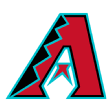 24. Corbin Carroll, OF, Arizona Diamondbacks
24. Corbin Carroll, OF, Arizona Diamondbacks
If Corbin Carroll were 6-foot-3, he wouldn't have lasted until the 16th pick in this year's draft; he might have gone first. Scouts dinged him for his height (5-foot-10), but he has shown that he can make hard contact with wood and against better teenage competition, as well as showing an idea of the strike zone, plus speed and the potential to stay in center. He's off to a very nice start in the Arizona League for an 18-year-old whose last game was a few weeks before the draft happened.
 25. Michael Kopech, RHP, Chicago White Sox
25. Michael Kopech, RHP, Chicago White Sox
Kopech had Tommy John surgery in September, so we probably won't see him in games again until next spring, but just before the injury, he appeared to have made the last big leap, going from erratic control to electric without any loss of stuff. He's a potential No. 1 starter if healthy.
 26. Will Smith, C, Los Angeles Dodgers
26. Will Smith, C, Los Angeles Dodgers
I thought about starting a #FreeWillSmith campaign on Twitter, but then I realized that would be a really terrible idea, so I'll just say it here: Free Will Smith, the best catcher in the Dodgers' system right now. The Dodgers' catchers in 2019 are hitting an aggregate .228/.323/.354, which includes 24 at-bats from Smith, who has two of the nine homers hit by Dodgers catchers. He's a good receiver and was drafted in part because of the belief that he is a good framer. He has a great eye at the plate, and since the Dodgers worked to optimize his launch angle, he has power, with 36 homers from Double-A through the majors since the start of last year. He's an average regular right now. And the Dodgers need him. Let's go: #FreeWillSmithTheDodgersCatcher.
 27. Luis Urias, 2B, San Diego Padres
27. Luis Urias, 2B, San Diego Padres
Urias struggled in the majors in April and has been destroying Triple-A since then, which could be a little bit about the Triple-A ball and El Paso's hitter-friendly park, but Urias always could hit, and if the Padres just get him to reemphasize quality contact over power, he'll be the player he was last year before his first call-up. Everything is there for him to be an average regular at second base right now, but he needs the chance to prove it.
 28. C.J. Abrams, SS, San Diego Padres
28. C.J. Abrams, SS, San Diego Padres
Abrams was the sixth pick in last month's draft, debuted two weeks later and through Monday's results hadn't had a hitless game in pro ball: a 16-game hitting streak, a .419/.443/.622 line, 10 steals in 10 attempts and six punchouts in 79 PA. All of these AZL and GCL stats are tiny samples, and at that level you could face a guy throwing 94 one night and a guy throwing 85 the next, but Abrams is a highly rated prospect with a good, compact swing who is producing right out of the gate with a wood bat. It almost feels like I have him too low.
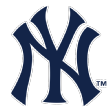 29. Deivi Garcia, RHP, New York Yankees
29. Deivi Garcia, RHP, New York Yankees
Garcia is just 5-foot-9, and his isn't a very physical or wide frame, but I've seen him three times this summer, and he's always 90-96 with three viable off-speed pitches, usually at least two of them showing plus, and hitters cut through his fastball like he's throwing 105 with spin. There's a ton of deception in his delivery -- from behind the plate, I can't pick the ball up until the last possible second from his hand -- and he pitches in the strike zone with the confidence of a big leaguer. I can't put a huge ceiling on a kid this small, but I like him as much as I can like a pitcher this size and weight.
 30. Dylan Carlson, OF, St. Louis Cardinals
30. Dylan Carlson, OF, St. Louis Cardinals
Carlson seemed like a reach when the Cardinals took him with their second pick, 33rd overall, in 2016. They had the 34th pick as well and took Dakota Hudson, who has already pitched in the majors. But I was wrong about that, as Carlson is both a much more advanced hitter than I realized and a better athlete. Carlson walks quite a bit, but it's the quality of his at-bats that has stood out when I've seen him, including spring training looks against big league pitchers, and is why I believe the line he has put up as a 20-year-old in Double-A this year (.287/.369/.515) is indicative of what he'll do in the majors. He has played primarily center field, though I think he's best suited to a corner, yet the fact that we can even consider him in center is another way I underestimated him on draft day. He probably isn't as famous as he should be or as he will be in a year or so when he hits the majors.
 31. Matt Manning, RHP, Detroit Tigers
31. Matt Manning, RHP, Detroit Tigers
The ninth overall pick in 2016, Manning struggled to throw strikes in his full-season debut in 2017 after a dreadful spring training that spawned whispers that he had the yips. A year and a delivery overhaul later, Manning ended up in Double-A, not just throwing strikes but throwing good ones, with a delivery he could repeat and that gives his 6-foot-6 frame the chance to extend out front, along with new depth on his curveball that he lacked in high school. He's a tremendous athlete who had a scholarship to play baseball and basketball for Loyola Marymount, and that athleticism is evident in how low-effort his delivery looks now. He looks like a potential No. 2 starter and isn't far from the majors.
 32. Matt Liberatore, LHP, Tampa Bay Rays
32. Matt Liberatore, LHP, Tampa Bay Rays
Liberatore was the 16th pick in last year's draft, a surprise because the industry thought he was going in the top 10. I had him ranked third on my pre-draft board, the top high school lefty, and I think that was in line with scouts' views before you consider the industry's general distrust of high school arms. The Rays were thrilled to get him, and so far he has been as good as promised, showing plus velocity, feel for a curveball and changeup, perhaps a little lighter on command and control than expected. He's still 19 and has just 85 pro innings; he doesn't seem like a fast-track arm, unlike teammate Shane Baz, who is a year older, bigger and has better pure stuff. Liberatore might be three years out, but he has No. 2 starter upside with just a little bit of projection and good health.
 33. Nate Pearson, RHP, Toronto Blue Jays
33. Nate Pearson, RHP, Toronto Blue Jays
Pearson hit 101 mph in the Futures Game, and he has hit 103 in the past -- and it isn't just a one-inning thing, as he will hit triple digits regularly as a starter. He had terrible luck in 2018 after a comebacker hit him in the elbow, effectively ending his season after one inning, but he has stayed on the mound this year and has continued to show progress in control and in developing consistent secondary stuff. The slider he showed Sunday was his best, 86-90 (it has hit 92) with terrific bite, and he'll show promise with the curve and change as well. He's still inexperienced, but there's No. 1/No. 2 starter stuff here.
 34. Royce Lewis, SS, Minnesota Twins
34. Royce Lewis, SS, Minnesota Twins
Lewis' 2019 season has been a head-scratcher. The 2017 No. 1 overall pick made some massive changes at the plate last winter, adding a high leg kick and another hitch in his hands, so his timing at the plate has been off, and even with some adjustments, the hitches were visible at the Futures Game. Lewis is still an elite runner with tremendous bat speed, so if the Twins can undo these changes to his mechanics, the hitter they drafted should still be in there. He's also a below-average shortstop who is probably better suited to center field, though that problem is secondary to the swing issues that produced a .237/.284/.363 line in high-A this spring.
 35. D.L. Hall, LHP, Baltimore Orioles
35. D.L. Hall, LHP, Baltimore Orioles
Hall was the 21st overall pick in 2017, a three-pitch lefty from rural south Georgia who had shown good velocity and feel for two secondary pitches. The stuff is all very much there, 92-96 with both the curve and changeup flashing plus, and he is incredibly athletic. One of the most common comments I heard from scouts after the Futures Game was how athletic he was, especially from pro scouts who'd never seen him before. He's so athletic that there is no reason he should have a walk rate like he does this year -- 18%, or about twice what it should be -- and when he's in the zone, hitters have trouble squaring him up. I'll still bet on an athlete such as this, especially one who's just 20, when he already has three above-average major league pitches and his delivery works.
 36. Ian Anderson, RHP, Atlanta Braves
36. Ian Anderson, RHP, Atlanta Braves
Anderson was the third overall pick in 2016, but he has been passed by some other Atlanta arms who raced to the majors -- Bryse Wilson, Kyle Wright, Touki Toussaint among them -- while plugging away a level a year. Anderson was definitely less advanced out of the draft than some of his fellow Atlanta prospects; he came from upstate New York and didn't pitch much his senior year around terrible weather and illness. He hits 92-96 as a starter and usually shows an above-average curveball, though he couldn't land it on Sunday at the Futures Game, and above-average changeup, with his command and control still enough of a weakness to keep him on the slow track to the majors. He has No. 2 starter upside but will have to throw more strikes to get there.
 37. Riley Greene, OF, Detroit Tigers
37. Riley Greene, OF, Detroit Tigers
Greene was the fifth overall pick in the 2019 draft, with some teams viewing him as the top high school hitter in the class. The Florida prep outfielder has a sound swing and very quick hands, with the potential to hit for average with real power down the line, enough to profile as an above-average regular in an outfield corner, which is where he's going to end up. He hit well enough in nine GCL games that the Tigers just bumped him up to advanced short-season Connecticut this week.
 38. Jazz Chisholm, SS, Arizona Diamondbacks
38. Jazz Chisholm, SS, Arizona Diamondbacks
Coming out of spring training, I expected Chisholm to perform well enough to jump into the top 20, but he got off to a rocky start in April and May, striking out too often (not shocking) and not doing much on balls in play (very shocking). He has been better the past few weeks, and it's not as if his electric bat speed changed. Even with his lousy start, he's second in the Southern League in homers with 17, behind a player three years his senior, and is still a 70 runner who has the hands and quickness to be a plus defender at short if he keep his body under control. I still think he's going to be a star, but he might be a year behind where I thought he was in March.
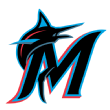 39. Sixto Sanchez, RHP, Miami Marlins
39. Sixto Sanchez, RHP, Miami Marlins
Sanchez got thick last fall and has stayed that way, so while he's still a sub-6-foot right-hander who can hit 100 mph, at least he's no longer a skinny, sub-6-foot right-hander. When Sanchez gets on the mound, he will show easy upper-90s velocity and throws everything for strikes. He throws a slider and curve, neither of which is consistent yet, and he doesn't have much of a changeup, but he has shown that he can at least dominate right-handers with his fastball. He has missed a bunch of time with arm injuries but has avoided the knife so far. He could be a midrotation starter -- I think ace is probably beyond his projection -- but there's some relief risk here too.
 40. Mitch Keller, RHP, Pittsburgh Pirates
40. Mitch Keller, RHP, Pittsburgh Pirates
Keller's big league starts haven't gone very well this year -- OK, two of them were atrocious -- and there's definitely some concern around the industry that his fastball/curveball combination, which has produced great results throughout full-season ball, is a little short. He does need a real changeup, and his fastball, which can sit 92-97, might be flat, but the curveball is plus, and he throws strikes with a solid delivery. He can still be a top prospect but probably requires some adjustment to his stuff or even his mechanics to get to be a No. 2 starter.
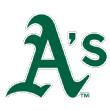 41. AJ Puk, LHP, Oakland Athletics
41. AJ Puk, LHP, Oakland Athletics
Puk looked nearly major-league-ready in spring training of 2018 but blew out his elbow before camp ended and is just now rehabbing with Double-A Midland, throwing only one-inning outings so far. Before the injury, the sixth overall pick in the 2016 draft was touching the high 90s with the best control he'd ever shown and great extension on his plus curveball. He's a midrotation starter if healthy.
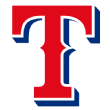 42. Leody Taveras, OF, Texas Rangers
42. Leody Taveras, OF, Texas Rangers
Taveras has been in my top 50 for more than two years now, but 2019 is the first time he has performed that way, with a .294/.368/.376 line while repeating high-A before a recent promotion to Double-A Frisco. He's a plus defender in center with speed to match, already setting a career high this year with 28 steals (82%), and even in bad years at the plate, he rarely struck out but struggled to create quality contact. He's still just 20 until September and is only starting to come into the strength that should let him hit for average and post high OBPs for a long time.
 43. Keibert Ruiz, C, Los Angeles Dodgers
43. Keibert Ruiz, C, Los Angeles Dodgers
Ruiz has been overshadowed a bit this year by Will Smith and by his underwhelming season as a repeater in Double-A, though he's still just 20 years old (until next week) and five months younger than Adley Rutschman. Ruiz is a switch-hitting catcher with future plus power; he'll show plus raw now and has more in there than four homers in 69 games would indicate, but that's what he has done this year. He rarely strikes out and has a good chance to stay behind the plate in the long term. Half a mediocre season from a kid a year above his age level isn't alarming, but I have to say I'm surprised he didn't get better while returning to Double-A.
 44. Jordan Balazovic, RHP, Minnesota Twins
44. Jordan Balazovic, RHP, Minnesota Twins
Balazovic made my "just missed" column this winter, coming in at No. 102 overall, and everything has pointed up for him since then, as he's now pitching well as a 20-year-old in high-A, still in the low- to mid-90s with a four-pitch mix and above-average or better control. He still has a lot of projection remaining, but this year has put him on more teams' radars, especially because this is his biggest regular-season workload to date.
 45. Alek Thomas, OF, Arizona Diamondbacks
45. Alek Thomas, OF, Arizona Diamondbacks
Thomas was a first-round talent in the 2018 draft but ended up going to the Diamondbacks in the second round, perhaps because teams didn't trust a sub-6-foot position player from a cold-weather school. He has hit a composite .319/.391/.480 in 128 pro games, more than half of that coming this year in low-A as a 19-year-old, and he's among the top 10 Midwest League hitters in average, OBP and slugging but remains very difficult to strike out. He's a premium athlete who projects to stay in center and might have a leadoff profile with average power rather than the middle-of-the-order kind of bat that would play anywhere, but his approach and instincts seem to be so good that the industry is valuing him way more highly than it did a year ago.
 46. Xavier Edwards, 2B/SS, San Diego Padres
46. Xavier Edwards, 2B/SS, San Diego Padres
Edwards was just promoted to high-A after leading the Midwest League in batting average in the first half. The supplemental first-round pick from 2018 walked just about as often as he struck out in low-A, stealing 20 bases in the first half while splitting time between second base (51 games) and shortstop (22). He could probably stick at short, but the Padres are loaded at that position with defensive wizards, and Edwards has a chance to be plus at second, with an old-school leadoff profile that features on-base skills and speed.
 47. Alec Bohm, 3B/1B, Philadelphia Phillies
47. Alec Bohm, 3B/1B, Philadelphia Phillies
Bohm was the third pick in last year's draft, from Wichita State, and didn't impress pro scouts when he debuted last summer and they saw his size while questioning how good a hitter he was. He cleaned up his body this winter, and nobody is questioning his hit tool now -- he hits everything, including good velocity, at least in the sense of putting the ball consistently in play. For a big-framed guy, he can keep his swing fairly small, resulting in low strikeout rates at three stops this year. (He wasted three-plus weeks in low-A, going full Trogdor on Sally League pitchers. I've said this many times: If you take a Division I hitter with your first-round pick and he can't go to high-A to start the next year, you took the wrong guy.) He's going to hit for power, maybe 20-25 homers rather than 35-plus, but if the former, they will come with a high average and lots of doubles. He isn't a third baseman, though he might play there in the majors briefly; I think you put him at first and let him rake.
 48. Ronny Mauricio, SS, New York Mets
48. Ronny Mauricio, SS, New York Mets
Mauricio impressed scouts as a 17-year-old in the GCL last year, with a week in Kingsport to finish the summer, but the Mets chose to be aggressive and pushed him to low-A this year, where Mauricio has held his own despite being the youngest regular in the league by more than three months. He just looks young, with too little weight on his 6-foot-3 frame when you're used to looking at other pro ballplayers, and he even runs like he's still learning his own body. But he has very good plate coverage and controls the barrel much better than you'd expect from his age and gangly appearance. He's a true shortstop with a chance to be an elite defender there, and we're probably three years from seeing his power potential come out. There is some good news on the farm, Mets fans, I promise.
 49. Julio Rodriguez, OF, Seattle Mariners
49. Julio Rodriguez, OF, Seattle Mariners
Rodriguez is the second-youngest position player in the Midwest League -- he's the guy who's three months older than Mauricio -- and has still managed a .292/.378/.446 line in 148 PA around a fracture in his hand, suffered when he was hit by a pitch. Rodriguez is listed at 6-foot-3, 180 pounds, and looks close to it, less awkward than Mauricio and definitely stronger, though he too has a ton of projection left. At the plate, his hands are quick, and he looks like he'll have significant power down the road because of how well he can hit the ball now when he gets his arms extended. He's already in right field with plenty of arm to stay there, and with fringy speed he wasn't going to play in the middle. He's a ways off, but there's middle-of-the-order potential in his bat.
 50. Nolan Jones, 3B, Cleveland Indians
50. Nolan Jones, 3B, Cleveland Indians
Jones has a really good approach at the plate, with an OBP in pro ball that sits at .416 as he heads to Double-A, and prior to this year, he showed plus game power and lots of hard contact. He has shortened up at the plate, losing the big stride and often closing himself off too much, which might be how he went from 19 homers in 519 PA last year to seven homers in 324 PA so far this year. There is definitely power there, and with his on-base skills, he could have an MVP's offensive stat line. He doesn't do anything against lefties other than walk, which is better than nothing but probably not a sustainable model. While I tried to keep the flame alive for Jones to stay on the dirt, I think he's going to have to move to right field. The first step for him is to get his power back, with above-average regular in right within reach when he does.
Honorable mention
Adrian Morejon, LHP, San Diego Padres
Morejon was 95-98 in Sunday's Futures Game, flashing a curveball but not his plus changeup in a brief outing. He has a starter's arsenal, but he has been kind of injury-plagued since the Padres gave him an $11 million deal as a free agent in 2016. He's working one- and two-inning stints as a starter in Double-A to try to keep him pitching without leading to injury.
Jordan Groshans, 3B/SS, Toronto Blue Jays
Groshans was off to a terrific start in low-A for a 19-year-old in his first full pro season, but a stress reaction in his foot has kept him off the field for two months.
Justin Dunn, RHP, Seattle Mariners
Dunn went to Seattle in the Kelenic deal -- the Mets got some guys, it's not good to dwell on these things -- and has been excellent as a starter for the Mariners in Double-A, punching out a shade less than 30% of batters and posting what would be his career-best walk rate. He's still a bit too much of a two-pitch guy, focused on his fastball up to 94 and a plus breaking ball, and there's a touch of effort in his release. I know several scouts who like him, but as a reliever. I still say he can start but acknowledge the volatility.
Other honorable mentions: Kyle Wright, RHP, Atlanta Braves; Bryse Wilson, RHP, Atlanta Braves; Anthony Kay, LHP, New York Mets
